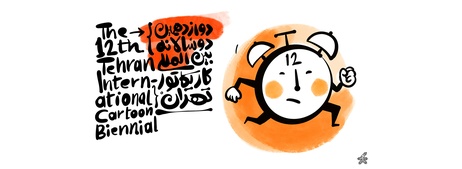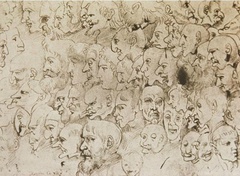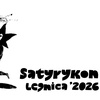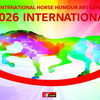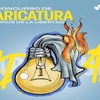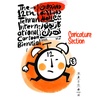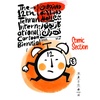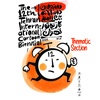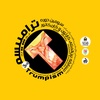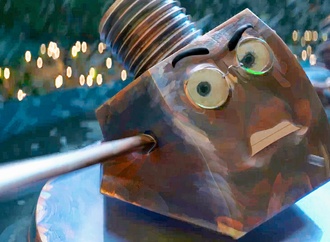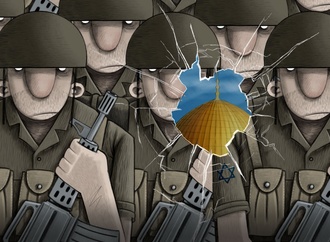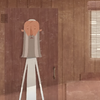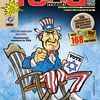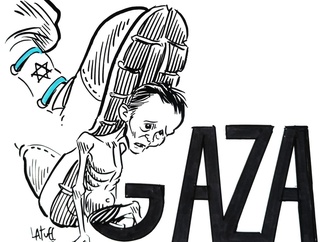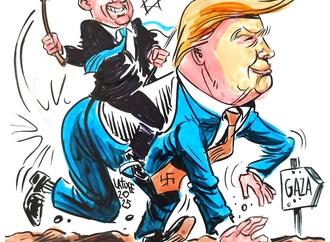By Massoud Shojai Tabatabai
At the beginning of the 19th century the British and Russian colonialists were attempting to plunder the Iranian natural resources and were doing everything possible to make this country their colony. The Russian Empire occupied a vast part of the wealthiest and fertile territories of Iran, and the historical fate of the people of those territories was gradually separated from that of the rest of Iranians. The Tsarist government of Russia which for long had cast covetous eyes on these affluent regions of Iran began to expand its establishments into the occupied territories, to the extent that by the end of 19th century and the beginning of 20th century. Important cities of these territories came to form one of the prosperous regions of Russia. The people of these regions who had lost all hope of getting help from the traitorous Qajar kings had no other choice but to surrender to Russian Pristaves and Nachlinks who were more perfidious and cunning than the Qajar Bakes and Daroghehs.
During the period of the Tsarist government’s domination over the Azerbaijani lands very harsh conditions prevailed over the political and cultural life of the people. This government biased towards these people and held them in contempt. By adopting a program of racist teachings and inculcation’s. It managed to create disdain in the minds of the Russian people against non-Russian nations and to persuade them to have officially consider them as strangers. As a result of such policies from the very beginning there were rebellions and uprisings of the people of Azerbaijan and other places against the Tsarist government in different ways.
Beacause of its colonialist aims and to exploit the national and human resources of the land, the Russian government expanded its industries in to the different cities of Azerbaijan especially Baku. This move caused an influx large groups of people into the cities from the villages in different parts Caucasia in order to find jobs. Groups of Iranians especially from the province of Azerbaijan in Iran also joined the influx. With the arrival of great masses of Iranian people into these cities and taking into account the fact that they took with themselves that, own cultural and political ideas ,the people of these cities were gradually given a new level of awareness. The consequences of this increased awareness induced movements against the despotic Tsarist regime which had been formed over many centuries.
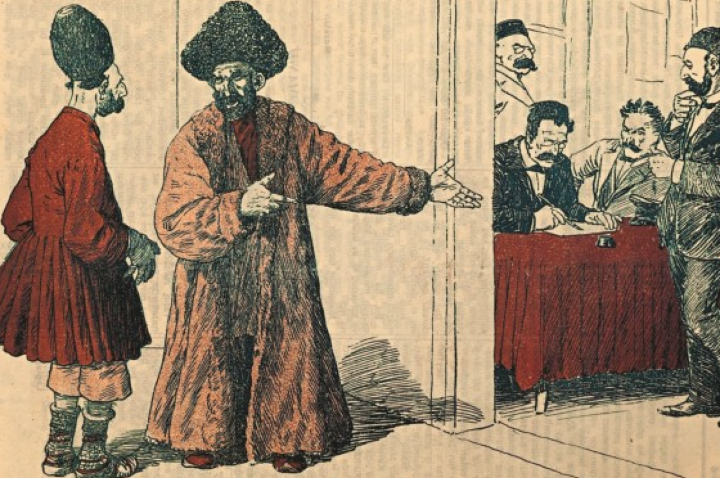
Although the 1905 Revolution against the Tsarist system in Russia was defeated, it still forced the regime to grant some concessions in regard. To the people’s new-found awareness As a result, an atmosphere was created in which certain groups setup organizations and began organizing the people and establishing political party offices. The constitutional movement in Iran, which had its roots in all sections of Iranian society, affected the continuation of the Russian revolution because of the direct conflict between Iranian citizens in the north of Iran and Tsarist forces.
Different newspapers were published for propaganda purposes and to invite the people to join the different parties and groups, which mainly gathered beneath the banner of Russian social democratic organizations under the leadership of Stalin, and these continuously reflected situations and events occurring at home and abroad especially in Iran.

The Mulla Nassrulldin Weekly
The history of the press in Azerbaijan an area, which is now Republic of Azerbaijan and a great part of Northern Iran, began in the 1870’s and in a short period of time, became one of the most important socio-political and literary organs. The Tsarist government, especially after the effects of the 1905 Revolution, was obliged upon the publication of a hypocritical declaration on March 18, 1906, to show a certain extent of tolerance and to exercise for béarnaise towards the press It was after this publication that newspapers and other printed matter related to different factions were introdused.
At this time, different groups related to the social democratic party the occasion to publish their newspapers and documents freely,items, which up until then had been underground. Among the newspapers of this period, “Hemat”,”Daavat” “Fuzat” “Hayat”, “Ershad” can be cited to name but a few. All these were published in Azerbaijan. in the Azeri Ianguage. Satirical newspapers too were also published, and in order to prom-date their views they used a certain style which adopted a humorous and ridiculing language which had ifs roots the culture of the people, of this land. Consequently the circulation of such publications was very high. PubIcations like “Mulla Nassrulldin, “Zanbour”, “Touti ‘Lak-Lak’ “Babaye Amir” “Mashal”, “Bohloul” and other were published. Mulla Nassrulldin led them all in style, the rest merely copied in one way or another.
The name of the magazine was taken from the mythical story of the honest and humorous Mulla Nassrulldin a very famous and familiar name amongst the people. The magazine adopted the same style as that used in the mythical story of Mulla Nassrulldin and portrayed daily events to the people through caricatures and humourous texts.
The first issue of Mulla Nassrulldin was published in Tbilisi the center of Georgia under the editorship of Mohammed Gholizadeh on April, 7, 1906. According to some reports, Jalil Mohammad Gholizadeh was born in Nakhjavan, and according to others his birthplace was Caucasia. He was proficient in the Persian, Azeri, and Russian languages. When he was 14 years old he entered Darollmoalemin in the city of Qouri in Georgia, and after finishing his studies there he spent some years teaching in the local schools. In 1904 he went to Tbilisi and began work as a writer for the newspaper “Shargeh Rous”. In 1905, after the newspaper had been banned the young writer assumed responsibility of its printing-house and changed its name to “Matba‘eh Ghairaf”. Because of the censorship laws laid down by the Tsarist government he did not have the opportunity, to continue his activities. It was not until 1906, after the constitutional Revolution had provided a suitable juncture, that Gholizadeh along with Faegh Afandi Ma‘amanzadeh, began to publish a weekly edition of Mulla Nassrulldin under the supervision of the “Houkrat” organ. Muhammad Gholizadeh gathered many of the outstanding cartoonists and writers of that time around himself, and by using the works of cartoonists like, “Roter” “O.I. Shelling, Azim Azimzadeh, Behzad, Mousayef, Yousef Vazir Ginosky, lbrahim zadeh and others, he selected cartoons as a realistic and critical form of illustration of the kind that was popular in Europe at that time. Although Gholizadeh ‘s weekly was greatly influenced by Turkish and Caucasian publications, still, because of the services granted by the great masters like “Rotor” and “Shelling” and the famous writers like Mirza Ali Akbar Taherzadeh (better known as “Saber”,) Abdulrahim Haghverdious, Mohammad Saeed Ordubari ,etc …it became the vanguard of the critical, humorous and political publications, at that time how ever, it must be accepted that this weekly provided a turning point in the development of caricature and humorous literature in the Azeri and Turkish languages.
The weekly Mulla Nassrulldin journal was printed and published in Tbilisi from 1906 until 1917 in Tabriz from 1921 until 1922 in Baku and in Baku, from 1922 until 1931 by stone-print. Its pictures were printed in black and white and other colours. Its first page had the title of Mulla Nassrulldin in Arabic and under it the same name in Russian. On the top of the title the date was printed according to the Christian and Islamic calendar. The number of the issue was added and under the title the price was printed both in the Russian and Azeri languages. This weekly was published in the Azeri language and sometimes had a page or a column written in Persian. The number of pages was eight and the size of the pages was 24×32 cm, the circulation of its first issue was 1000 the second issue 2000 and circulation of the other issues numbered, 5000 in a week.
The weekly Mulla Nassrulldin which claimed to be the supporter of freedom demand a severe attack on dictatorship in all its forms, and it considered itself to be the vanguard of such an attack of course in satirical way. Its destination and aims were in accordance with the policies of the social democratic party.

In the first issue a caricature by shelling was printed on the first page. This caricature showed the sleeping world of Muslims, on arising from their slumber, while yawning Mullanassrulldin was drawn looking down at them.
He was presented as a white-bearded old man and his physical appearance was meant to depict the contemporary the Muslims.
Roter and shelling who were originally from Germany played an important role in presenting the Mulla’s character to the people. At first, because of their lack of familiarity with the local and traditional customs of Iran, they could not attract the people to he extent that they thought they would have been able to. Thus they begin traveling around the Iranian cities and villages and upon becoming relatively familiar with the local culture and tradition, they started their work of satirizing this culture and tradition. At times they went too far in their task, and their satirical portrayals became offensive. Because of these insults the Iranian clergy at that time boycotted this weekly along with its writers and designers and started to oppose it.
Roter with his realistic caricatures and because of this complete acquaintances with the psychological and visual significances of caricature, showed the complex how’s and whys in this work. He paid complete attention to the object’s kind and tissue; he was always searching for satirical themes. He drew his caricatures with diligence and with a careful exactness about details. He used several hash hours in order to show shade and light and light and in order to express depth and volume. This is why his work could not be copied and therefore his style was not adopted as common practice.
In 1920 Gholizadeh came to Tabriz and s stayed there for a year, and in 1921 he published his newspaper. He published and issues of this newspaper in this city the location of its office in Tabriz was in the Omid Matba ‘e (press), the Ostad Shagerd Bazaar, Prince Nosratollsaltafleh’s house.
The subject matter of the primary pictures of Mulla Nasseruddin was set forth by Jalil Mohammad Gholizadeh and the pictures were drawn by Rater under his direct supervision. Rater’s pictures soon found popularity with the people because of their closeness to reality. His work “without comment” was published in Mulla Nasserulddin. In addition to the literate people, these works became greatly popular with the illiterate people. Every person could use these pictures establish some kind of a relation the daily events and problems as dictated by the artist. Shilling however used to draw his caricatures simple and creative lines avoiding unnecessary lines, he also rejected the creation of atmosphere in his it was for these reasons that his caricatures were imitated by the majority of Iranian caricaturists, to the extent that there is not the slightest difference technically between his works and the works of Iranian caricaturists designers. Shilling’s simple a explicit designs with relative action in form and style, was nor from Rater’s realistic approach. Effect, the personality set forth by these two designers was closer realistic forms than caricatures.

Roter and Shilling, the main image makers of the Mulla Nasserulddin monthly, showed a great understanding of social subjects and social problems and this played important part in making magazine the most prominent satirical publication among the magazines that time.
Information gathered from the surviving documents of this magazine suggests that eight image makers caricaturists from different nationalities worked for the Mulla monthly from its first publication 1917. They are:
O.I. Shemerling (Shilling), I. Roter, Azim Azimzadeh, Giladzeh, Yosef vazir, Kh. Mosayev, A. Ebrahimzadoll and Grinovski.
Roter and Shilling worked for the magazine longer than others. After them Azim Azimzadeh took over Roter and Shilling helped Gholizadeh greatly in getting Mulla Nasseruldin off the ground.
Sources:
Azarbaijan Satire Rouznamehlary Nazem Akhondou Tehran, Farzaneh publishers September 1971.
Mulla nasserulddin the Enghelab Pake magazine, Mohammad Pifon Tehran, KAR publishers 1979.
From Saba till Nima, A Yahya, Tehran, Amirkabir second volume.
– See more at:
http://www.iranchamber.com/art/articles/caricature_cartoon_iran.php#sthash.SP2NTVU6.dpuf


